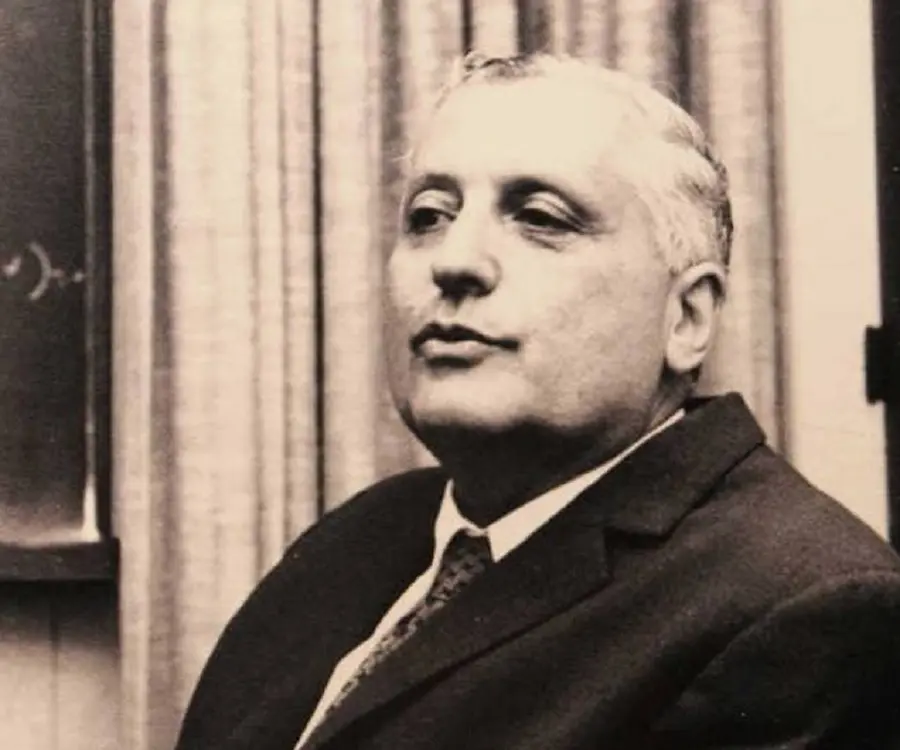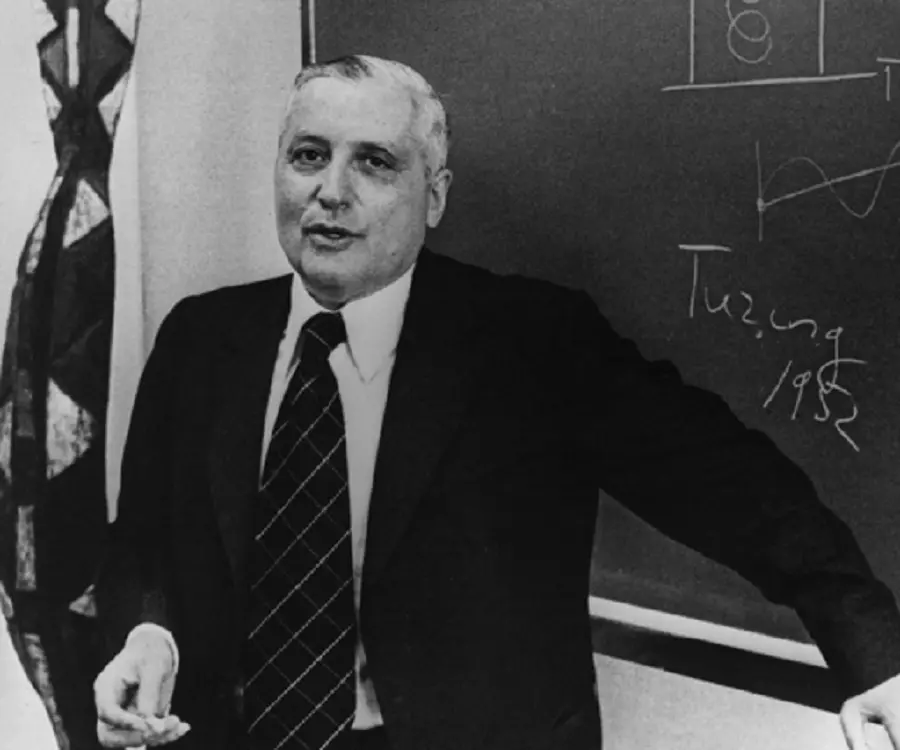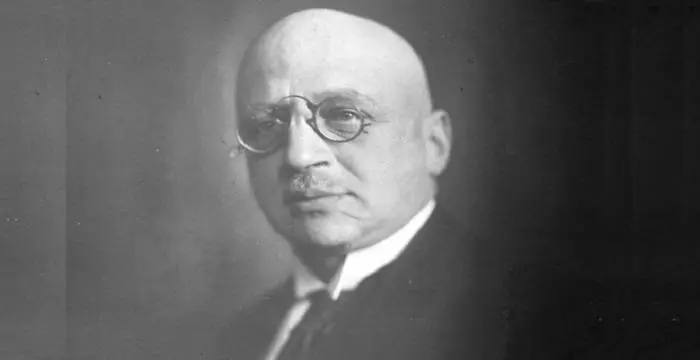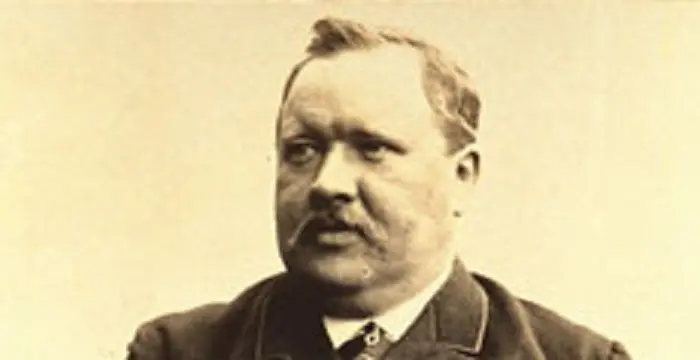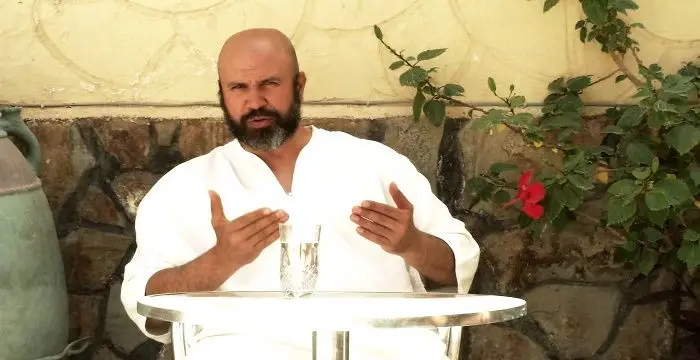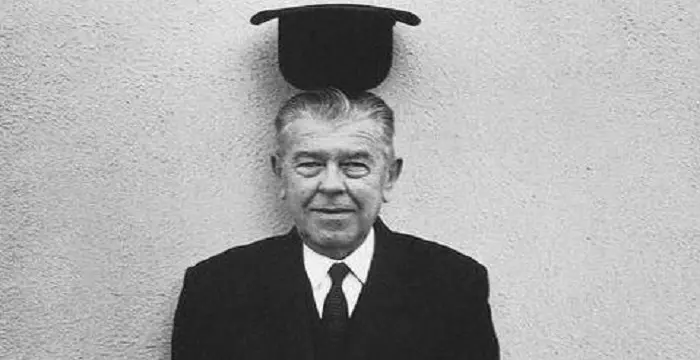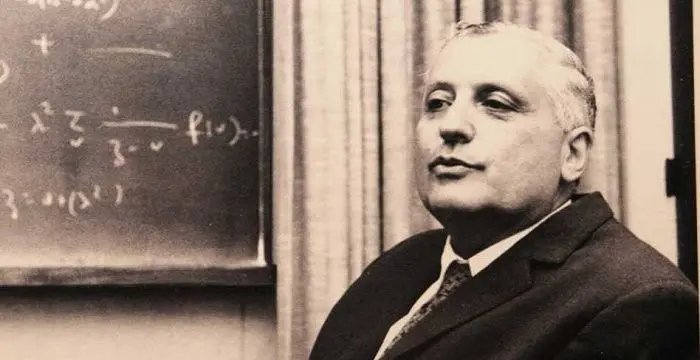
Ilya Prigogine - Belgian Men, Career and Life
Ilya Prigogine's Personal Details
Ilya Prigogine was a Russian-born Belgian physical chemist who was awarded the Nobel Prize for Chemistry in 1977
| Information | Detail |
|---|---|
| Birthday | January 25, 1917 |
| Died on | May 28, 2003 |
| Nationality | Belgian |
| Famous | Scientists, Physical Chemists, Belgian Men |
| Spouses | Hélène Jofé (m. 1945; 1 child) Maria Prokopowicz |
| Birth Place | Moscow, Russia |
| Gender | Male |
| Sun Sign | Aquarius |
| Born in | Moscow, Russia |
| Famous as | Physical Chemist |
| Died at Age | 86 |
// Famous Belgian Men
Stromae
Stromae is a Belgian musician, rapper, singer and songwriter. Check out this biography to know about his birthday, childhood, family life, achievements, and fun facts about him.
Kevin De Bruyne
Kevin De Bruyne is a Belgian footballer who plays for the English Premier League team ‘Manchester City’ as well as the Belgian national team.
Hergé
Georges Prosper Remi, better known by his pen name Herge, was a Belgian cartoonist and illustrator, who created the iconic Tintin comic strip. This biography profiles his childhood, life, career, achievements and timeline.
Ilya Prigogine's photo
Who is Ilya Prigogine?
Ilya Prigogine was a Russian-born Belgian physical chemist who was awarded the Nobel Prize for Chemistry in 1977 for his contributions to non-equilibrium thermodynamics, particularly the theory of dissipative structures. He was also renowned for his work on complex systems and irreversibility. Born in Russia shortly before the Russian Revolution of 1917, he moved to Belgium with his family when he was a young boy. As a student he was more interested in history and archaeology but fate led him to choose chemistry. After receiving his undergraduate and graduate degrees in chemistry from the Université Libre de Bruxelles, he embarked on an academic career, becoming a professor at his alma mater. He performed vital research in chemistry following the World War II and devised mathematical models that showed how chemical reactions could produce complex, changing patterns that he termed “dissipative structures.” It was his research on the role of these structures in thermodynamic systems far from equilibrium that earned him the Nobel Prize. He is also credited to have developed the basis of the two fluid model in collaboration with Robert Herman. In the later part of his career, he focused on the fundamental role of Indeterminism in nonlinear systems on both the classical and quantum level.
// Famous Scientists
Juliane Koepcke
Juliane Koepcke is a German-Peruvian biologist, who was the lone survivor among the 92 passengers and crew of the ill-fated LANSA Flight 508 that crashed in the Peruvian rainforest on 24 December 1971. Know more about her life in this biography.
Henry Cavendish
Henry Cavendish was a theoretical chemist and physicist, renowned for discovery of hydrogen and calculation of the mass of earth. To know more about his childhood, profile, timeline and career read on
Konstantin Tsiolkovsky
Konstantin Tsiolkovsky was a Russian rocket scientist and a pioneer of astronautics. This biography provides detailed information about his childhood, family, personal life, career, achievements, etc.
Childhood & Early Life
Ilya Romanovich Prigogine was born on 25 January 1917, in Moscow, Russian Empire, to Roman (Ruvim Abramovich) Prigogine, a chemical engineer, and his wife Yulia Vikhman, a pianist. He had one brother.
The Russian Revolution of 1917 started when he was a small baby. His family grew exceedingly critical of the new Soviet system and left Russia in 1921. They first went to Germany and then moved to Belgium in 1929.
As a young boy, Prigogine was interested in music, history and archaeology. However, he chose science for his formal education and received his undergraduate and graduate degrees in chemistry from the Université Libre de Bruxelles. He received a doctorate in 1941.
Career
Ilya Prigogine accepted the position of a professor at his alma mater, Université Libre de Bruxelles, in 1950. Over the course of his successful academic career he rose through the ranks quickly and was appointed director of the International Solvay Institute in Brussels in 1959.
In 1959, he also started teaching at the University of Texas at Austin in the United States; he would split his future academic career between the University of Texas and the Université Libre de Bruxelles. He was later made Regental Professor and Ashbel Smith Professor of Physics and Chemical Engineering at Texas.
He was affiliated with the Enrico Fermi Institute at the University of Chicago from 1961 to 1966. In 1962, he became director of the International Institute of Physics and Chemistry in Solvay.
He co-founded the Center for Thermodynamics and Statistical Mechanics, now the Center for Complex Quantum Systems, in Austin in 1967. Active in research from the post World War II period, he made many significant discoveries in the 1960s.
Working with his colleagues R. Balescu, R. Brout, F. Hénin and P. Résibois, he formulated non-equilibrium statistical mechanics and mathematical models that showed how chemical reactions could produce complex, changing patterns.
Prigogine’s work on the application of the second law of thermodynamics to complex systems, including living organisms, was especially significant. The law states that in any isolated physical system, order inevitably dissolves into decay. However, Prigogine was of the opinion that as long as systems receive energy and matter from an external source, nonlinear systems (or dissipative structures) can go through periods of instability and then self-organization.
His pioneering dissipative structure theory proved influential in a wide variety of fields, ranging from physical chemistry to biology. It also paved the way for the development of new disciplines of chaos theory and complexity theory. In addition, it led to philosophical inquiries into the formation of complexity on biological entities.
In collaboration with Robert Herman, he developed the basis of the two fluid model, a macroscopic traffic flow model to represent traffic in a town/city or metropolitan area, analogous to the two fluid model in classical statistical mechanics.
During the later years of his career, he focused upon the fundamental role of Indeterminism in nonlinear systems on both the classical and quantum level. In collaboration with his colleagues, he proposed a Liouville space extension of quantum mechanics.
Ilya Prigogine wrote or was co-author of 20 books—including several with Isabelle Stengers—and almost 1,000 research articles. One of his best known books is ‘La Fin des certitudes’ (1996), co-authored by Isabelle Stengers and published in English in 1997 as ‘The End of Certainty: time, chaos, and the new laws of nature.’
In 1997. he also became a co-founder of the International Commission on Distance Education (CODE), a worldwide accreditation agency.
Major Works
Ilya Prigogine is best known for his work on dissipative structures, a term he coined while working on such structures which were observed in physical chemtry experiments in the late 1960's. Examples of such structures in everyday life can be found in convection, turbulent flow, cyclones, hurricanes and living organisms.
Awards & Achievements
In 1955 he won the Francqui Prize for Exact Sciences.
He received the Rumford Medal in 1976 for his study in irreversible thermodynamics.
Ilya Prigogine was awarded the Nobel Prize in Chemistry 1977 "for his contributions to non-equilibrium thermodynamics, particularly the theory of dissipative structures".
In 1989, he was awarded the title of Viscount in the Belgian nobility by the King of the Belgians.
Personal Life & Legacy
Ilya Prigogine’s first marriage was to Belgian poet, Hélène Jofé, with whom he had a son. The marriage ended in divorce.
He married Polish-born chemist, Maria Prokopowicz, in 1961. This union also produced a son.
He died on 28 May 2003, at the age of 86.
// Famous Physical Chemists
Willard Libby
Willard Frank Libby was an American physical chemist who was awarded the ‘Nobel Prize’ in Chemistry in 1960. This biography profiles his childhood, life, career, research, achievements and timeline.
Fritz Haber
Fritz Haber was a German chemist who won the 1918 Nobel Prize in Chemistry for the synthesis of ammonia from its elements. Check out this biography to know about his childhood, life, achievements, works & timeline.
Svante Arrhenius
Svante Arrhenius was a renowned Swedish scientist who is regarded as father of modern day physical chemistry. To know more about his childhood, profile, career and timeline read on
Ilya Prigogine's awards
| Year | Name | Award |
|---|---|---|
Other | ||
| 0 | 1977 - Nobel Prize in Chemistry | |
| 0 | 1976 - Rumford Medal | |
Ilya Prigogine biography timelines
- // 25th Jan 1917Ilya Romanovich Prigogine was born on 25 January 1917, in Moscow, Russian Empire, to Roman (Ruvim Abramovich) Prigogine, a chemical engineer, and his wife Yulia Vikhman, a pianist. He had one brother.
- // 1941As a young boy, Prigogine was interested in music, history and archaeology. However, he chose science for his formal education and received his undergraduate and graduate degrees in chemistry from the Université Libre de Bruxelles. He received a doctorate in 1941.
- // 1950 To 1959Ilya Prigogine accepted the position of a professor at his alma mater, Université Libre de Bruxelles, in 1950. Over the course of his successful academic career he rose through the ranks quickly and was appointed director of the International Solvay Institute in Brussels in 1959.
- // 1955In 1955 he won the Francqui Prize for Exact Sciences.
- // 1959In 1959, he also started teaching at the University of Texas at Austin in the United States; he would split his future academic career between the University of Texas and the Université Libre de Bruxelles. He was later made Regental Professor and Ashbel Smith Professor of Physics and Chemical Engineering at Texas.
- // 1960Ilya Prigogine is best known for his work on dissipative structures, a term he coined while working on such structures which were observed in physical chemtry experiments in the late 1960's. Examples of such structures in everyday life can be found in convection, turbulent flow, cyclones, hurricanes and living organisms.
- // 1961He married Polish-born chemist, Maria Prokopowicz, in 1961. This union also produced a son.
- // 1967He co-founded the Center for Thermodynamics and Statistical Mechanics, now the Center for Complex Quantum Systems, in Austin in 1967. Active in research from the post World War II period, he made many significant discoveries in the 1960s.
- // 1976He received the Rumford Medal in 1976 for his study in irreversible thermodynamics.
- // 1977Ilya Prigogine was awarded the Nobel Prize in Chemistry 1977 "for his contributions to non-equilibrium thermodynamics, particularly the theory of dissipative structures".
- // 1989In 1989, he was awarded the title of Viscount in the Belgian nobility by the King of the Belgians.
- // 1996 To 1997Ilya Prigogine wrote or was co-author of 20 books—including several with Isabelle Stengers—and almost 1,000 research articles. One of his best known books is ‘La Fin des certitudes’ (1996), co-authored by Isabelle Stengers and published in English in 1997 as ‘The End of Certainty: time, chaos, and the new laws of nature.’
- // 1997In 1997. he also became a co-founder of the International Commission on Distance Education (CODE), a worldwide accreditation agency.
- // 28th May 2003He died on 28 May 2003, at the age of 86.
// Famous Belgian peoples
Michel Qissi
Michel Qissi is a Moroccan-Belgian actor known for his role in the martial arts flick ‘Kickboxer.’ Check out this biography to know about his childhood, family life, achievements and fun facts about him.
Stromae
Stromae is a Belgian musician, rapper, singer and songwriter. Check out this biography to know about his birthday, childhood, family life, achievements, and fun facts about him.
Rene Magritte
Rene Magritte was a Belgian surrealist artist known for his thought-provoking images that force the observers to think beyond their perceptions of reality. This biography provides information about his childhood, life, works & achievements.
Natacha Van Honacker
Natacha Van Honacker is the wife of Belgian soccer player Eden Hazard. Check out this biography to know about her family, personal life, etc.
Jean-Claude Van Damme
Jean-Claude Van Damme is a popular Belgian martial artist, actor and director. This biography provides detailed information about his childhood, life, works, achievements and timeline.
Kevin De Bruyne
Kevin De Bruyne is a Belgian footballer who plays for the English Premier League team ‘Manchester City’ as well as the Belgian national team.
Ilya Prigogine's FAQ
What is Ilya Prigogine birthday?
Ilya Prigogine was born at 1917-01-25
When was Ilya Prigogine died?
Ilya Prigogine was died at 2003-05-28
Which age was Ilya Prigogine died?
Ilya Prigogine was died at age 86
Where is Ilya Prigogine's birth place?
Ilya Prigogine was born in Moscow, Russia
What is Ilya Prigogine nationalities?
Ilya Prigogine's nationalities is Belgian
Who is Ilya Prigogine spouses?
Ilya Prigogine's spouses is Hélène Jofé (m. 1945; 1 child) Maria Prokopowicz
What is Ilya Prigogine's sun sign?
Ilya Prigogine is Aquarius
How famous is Ilya Prigogine?
Ilya Prigogine is famouse as Physical Chemist



